The Meizu MX4 Pro Review
by Andrei Frumusanu on February 16, 2015 2:00 AM EST- Posted in
- Smartphones
- Exynos
- Mobile
- Meizu
GPU Performance
The Exynos 5430's Mali T628MP6 at 600MHz should be a predictable test candidate now that we have scores from Note 4's Exynos 5433 and Huawei's Kirin 920 devices. The MX4 Pro should perform slightly worse than the 5433. Meizu maintains the ALU load percentage based scaling logic that I've covered in the Note 4 Exynos review, meaning that ALU heavy loads allow the GPU to scale up to 600MHz while more traditional loads will limit the GPU to 550MHz.
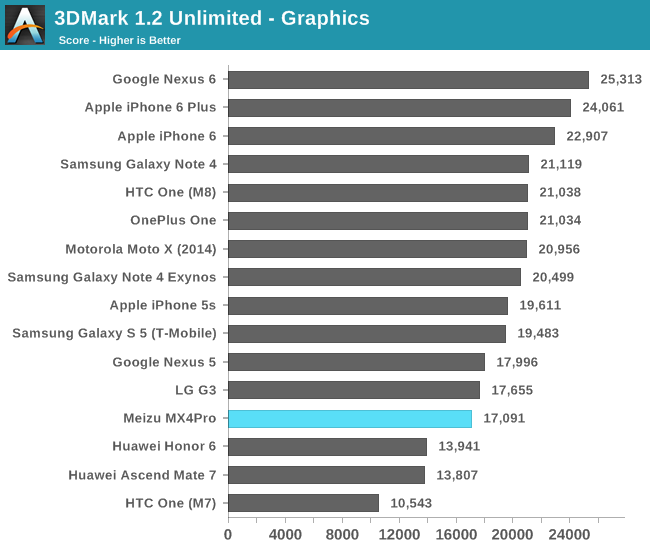
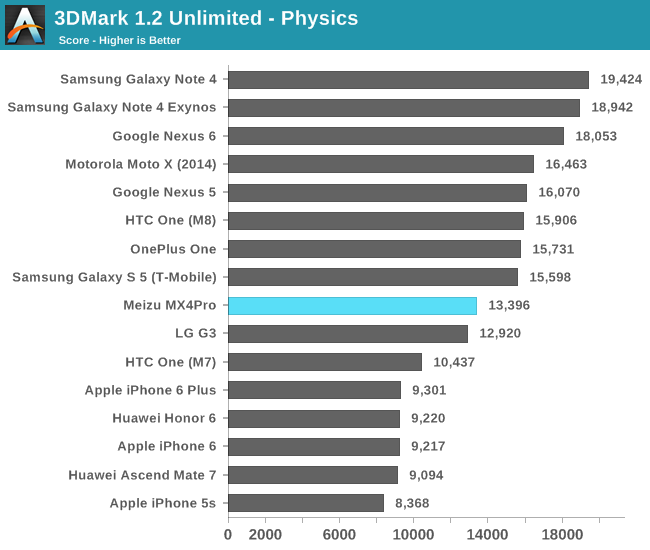
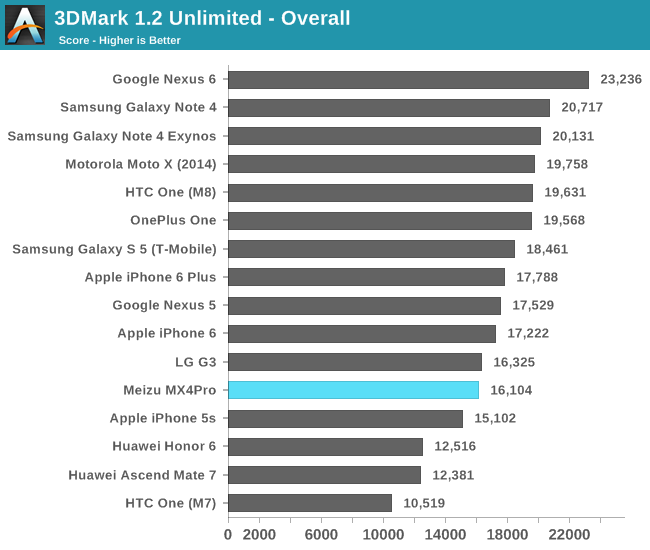
In the 3DMark Unlimited Graphics test we see how the Mali lands more or less where we expected it, worse than the Note 4 and better than the Huawei units. The physics score is still a strongly CPU-bound test and the weaker A7 cores of the 5430 are what is used during most 3D loads.
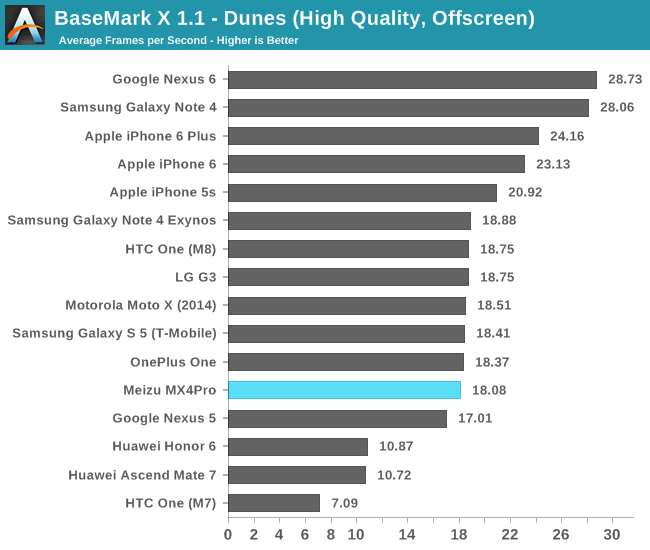
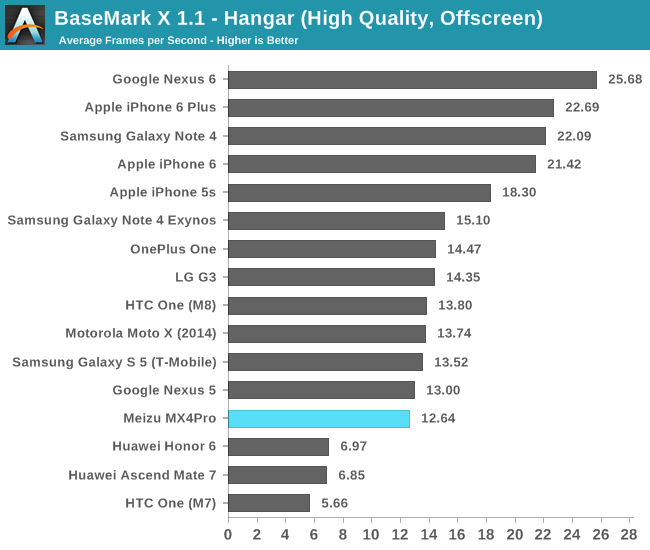
As we move on to BaseMark X, we're getting into more pure 3D loads that are not as affected by CPU speeds. Here we see the Mali T628MP6 outperform the Kirin 920 by much more than what we would expect from 50% more cores on the MP4 configuration. I've mentioned in the Note 4 review that Samsung has dedicated and added a lot of cache in the Mali's in the 543X Exynos SoCs, and this delta might very well be a result of the modified implementation. The MX4 Pro is on the heels of Adreno 330 devices.
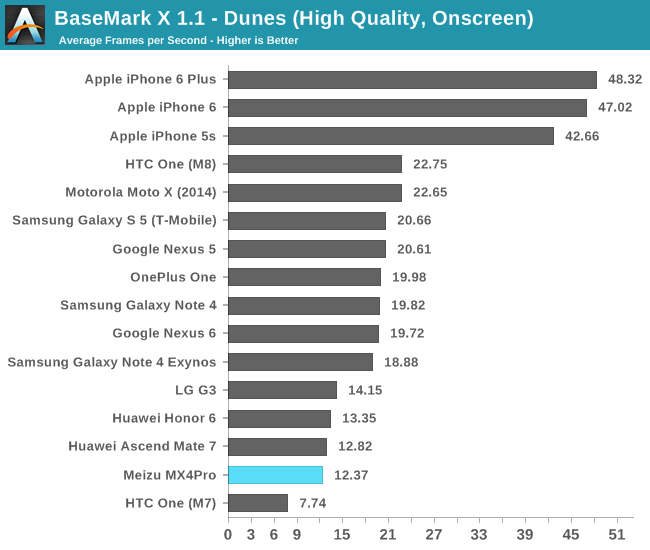
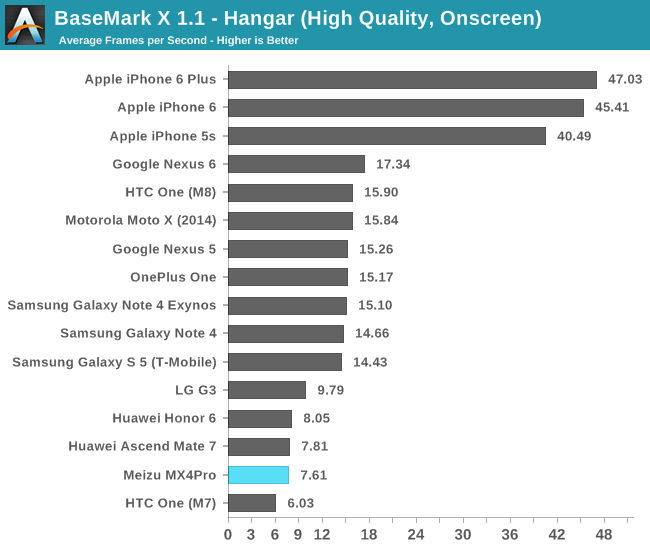
The higher-than-QHD resolution of the MX4 Pro drags down the on-screen scores by a significant amount. There seems to be a bandwidth bottleneck here as the device doesn't manage to outperform the Kirin devices.
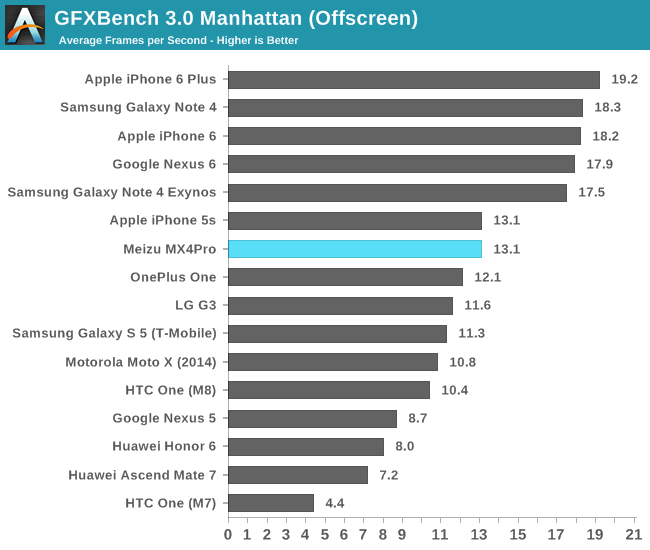
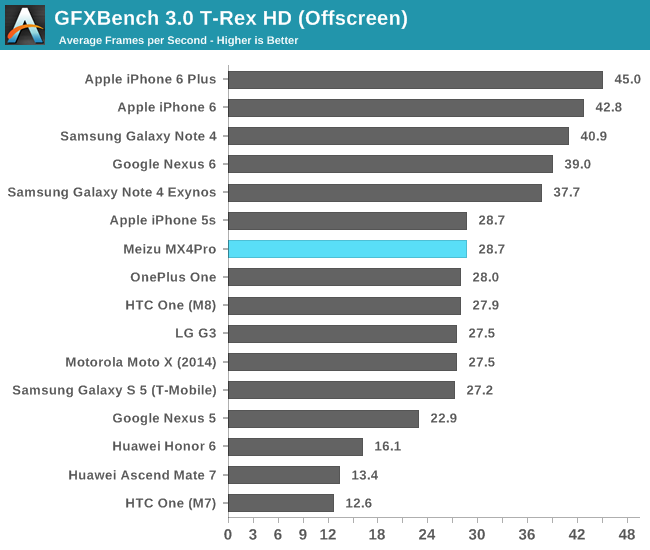
The Manhattan and T-Rex off-screen scores again put the Exynos 5430 at the level of the Adreno 330.
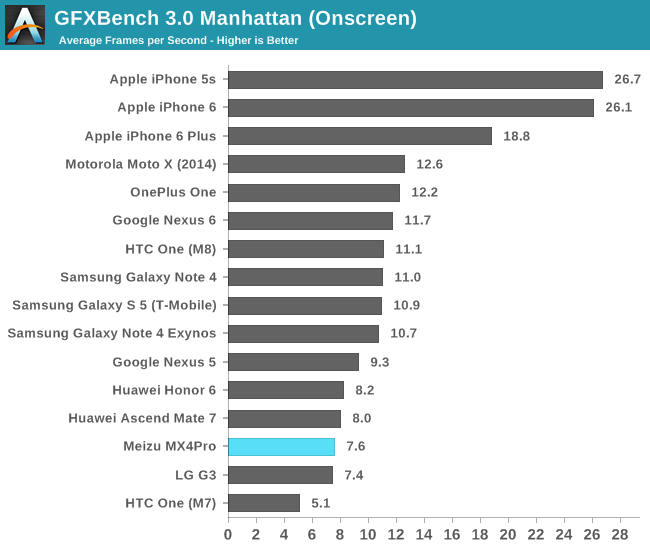
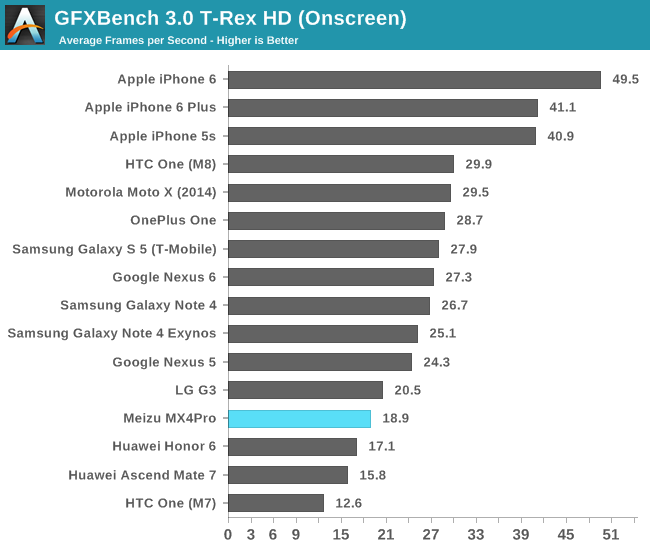
The onscreen scores again reverse the scores and put the Mali at a greater disadvantage. It seems while the Exynos 5430 is able to properly keep up at 1080p resolution, the performance degradation when switching to 1560p is quite large.
GPU Power
The Note 4 review started something that I hope to continue in the future whenever a device allows me to do a full power analysis. The MX4 Pro is luckily one of those devices, and I was able to measure some interesting figures that I'll be getting into more in the battery life section. For now, I present some isolated GPU power figures employing the same methodology that I've used for the Exynos 5433, meaning the system is limited to the little cores and the device's screen power is subtracted from the off-screen tests of GFXBench.
While the MX4 Pro and the Galaxy Alpha both employ the same SoC, the rather massive difference between the two comes from the fact that my Alpha test unit had the second-worst chip bin possible, having much higher voltages than what the MX4 Pro is running on its Exynos 5430. My Meizu unit has a median-tier bin, which is something that a larger amount of people should be able to enjoy. On average we see a 62.5mV voltage drop throughout all the GPU frequencies.
The end result is that the MX4 Pro roughly consumes a full 1W less than the Alpha. Shaving off 25% of power consumption just by having a different chip bin demonstrates how volatile device benchmarking can be, as the review units we receive can be very different to what another site tests, not to mention user devices. As I continue to collect more data I hope that we can do a full competitive analysis of the SoC market in the future.











70 Comments
View All Comments
olafgarten - Monday, February 16, 2015 - link
This looks like an iSamsung.jameskatt - Monday, February 16, 2015 - link
This is why Samsung is in deep trouble. Bottom feeders like Meizu can simply copy Samsung's designs and sell more phones, killing Samsung's own opportunity to sell phones.sonny73n - Tuesday, February 17, 2015 - link
Copy Samesung designs? Lol. Don't you even know all smartphones are rectangle with touchscreen and volume buttons? The only theft I know stealing designs from Apple is Samsung. Funny that they had pictures of the iPhone designs side by side with theirs with arrows and marks and notes showing how to. Then the whole thing leaked out and Samesung got their arses sued off. I couldn't stop laughing when I saw those pictures. Google it.Samesung design is ugly. They keep releasing the same old ugly thing over and over, protruding camera and speaker on the back, only in different sizes. Lol. Then they call it new and slap a premium price on it. Low specs and high price on the same ugly thing lol.
Oh! Didn't you know they cheated in benchmarks? Lol. So lame. I can't wait for those cheating crooks hit the dumps.
TT Masterzz - Monday, February 16, 2015 - link
Nice to see AT reviewing devices primarily sold in Asia. On a side note why don't you guys review Xiaomi devices. Xiaomi is much bigger than Meizu. They are the largest in China and some of their smartphones are amongst the top 10 most sold smartphones in the world. Would love to see a review of Mi Note Pro for example.Pissedoffyouth - Monday, February 16, 2015 - link
I'd like them to do even less known ones, like ThL phones or similar.jjj - Monday, February 16, 2015 - link
It is the second cheapest 1440p (or about that in this case) phone on the market at China prices (2499CNY/400$) after the Iuni U3 but maybe the MX 4 is more interesting since it's 20% cheaper and the most interesting Meizu is the m1 Note since it's one of the first to define the new 2015 midrange (5.5 inch 108p, 8xA53 , 2GB RAM at 160$).As for the lack of microSD, they have an Apple fetish they have a hard time doing better so the Meizu m1 is their first device with one, all previous models don't have it.
But Meizu is a name to watch this year, by my estimates they sold 6.5-7.5 million units last year but they changed strategy and instead of one device per year now they are playing in a bunch of price bands. So they'll have fantastic growth this year ,they'll easily hit 20 million units but in an ideal scenario they could even get close to 40 million units. They are trying to catch Xiaomi (Xiaomi went from 1 model to a few earlier) and they might get there in 2-3 years.
Hard to say if they have the intelligence, creativity, instinct to do more and actually make a difference but we shall see.
Oh and ofc hopefully they'll get the Exynos 7420 or better in their next flagship since Meizu always goes Samsung (the only significant external win for Exynos so far) so their next flagship could be one of the few devices faster than most other flagships that are by default SD810 based.
jjj - Monday, February 16, 2015 - link
Also too bad you can't test LTE, was curious how Marvell does, they usually do a got job in everything (HDD controller, SSD controller, networking) but in mobile they had some tough years with the Blackberry decline.Andrei Frumusanu - Monday, February 16, 2015 - link
Like I said it does pretty well in subjective testing. I just need to get more Qualcomm devices and I'll do a proper comparison of all of them in the future.jjj - Monday, February 16, 2015 - link
Maybe AT could do a dedicated article on LTE with Qualcomm , Marvell , Mediatek , Intel ,Hisilicon. Icera.Gemuk - Monday, February 16, 2015 - link
Sad indeed that 8xA53 is considered midrange nowadays. Agree though that the m1 Note should do well, at least until Xiaomi releases the Redmi Note 2 (if there is one)